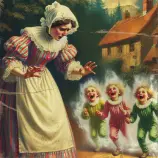
January 8, 1991
Jeremy Wade Delle, 15 years old, shoots himself in the head in front of a class of students who knew him. Jeremy was troubled, depressed, but never violent towards others. His parents were divorcing, but they did try to get him help after a failed suicide attempt. However, the 1990's were not a good time to be seeking treatment for mental illness. For profit insurance combined with large privately owned hospital chains led to hospital stays based on insurance payouts and not the actual needs of the patients. It was common to discharge patients when the approved insurance visits ran out and pronounce the patient well enough to go home whether it was true or not.
When he returned to school it was decided that they would put Jeremy into In School Suspension (ISS) alone, all day, every day, indefinitly. The story about the song says that he was late to his class and sent for a hall pass, but that wasn't the case. Jeremy was not supposed to be in any class, so the teacher asked him for a hall pass. Jeremy's powerful 'speech' that day inspired the idea of the song, but Eddie Vedder says that the violent elements were inspired by a personal friend who threatened violence at their school.




























